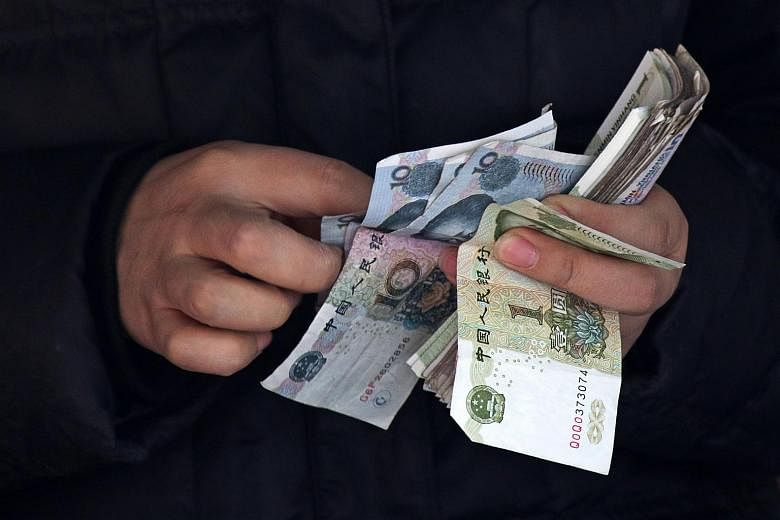SHANGHAI (REUTERS) - Chinese banks extended a surprisingly robust 1.48 trillion yuan (S$330 billion) in new loans in July but economists said the numbers may have been distorted by Beijing's massive rescue package for the slumping stock market and other policy measures.
New bank lending has been weak for much of this year despite interest rates cuts and looser lending restrictions.
The People's Bank of China (PBOC) has cut rates four times since November and also trimmed bank reserve requirements to support flagging growth in the world's second-largest economy. Amid more evidence of export weakness, the central bank also stunned markets by devaluing the yuan on Tuesday.
New yuan loans in July trumped the previous month's lending of 1.28 trillion yuan while broad money supply expanded an annual 13.3 per cent, faster than June's 11.7 per cent.
Economists polled by Reuters had predicted money supply would expand 11.7 per cent, with new yuan loans at 738.0 billion yuan.
Outstanding yuan loans grew at 15.5 per cent by month-end, faster than expectations for a rise of 13.6 per cent.
Economists say the past two months of stronger data may suggest commercial banks are starting to respond more strongly to stimulus measures, but could also reflect the massive stock market run-up in June and subsequent government rescue.
"It's all about the stock market," said Zhou Hao, Senior Emerging Markets Economist at Commerzbank AG in Singapore. "Part of the increase is probably due to the local government debt swap and other stimulus measures. But we know the government has raised around 2 trillion yuan for the stock market rescue, and also that banks have been very reluctant to lend to corporates over the last several months."
"Given all this, the big July lending number is very interesting, and it's difficult to know what percentage is actually going to corporates."
A recent note from Goldman Sachs estimated that 17 commercial banks had lent the China Finance Corporation, China's official margin lending firm and the main vehicle for the stock market rescue, nearly 1.3 trillion yuan.
China's huge stock rally in the second quarter was also driven in part by a massive increase in margin debt, some of which likely had its ultimate source in bank loans.
The PBOC said in a statement the rise in yuan loans was due to steady growth policy, demand for working capital, a real estate rebound and local government debt swaps.
It also acknowledged the government's equity market rescue efforts in July had probably influenced the monetary data.
"Recently China's capital markets have been volatile," the PBOC said. "In order to stabilise market expectations, guard against financial risks, and support healthy capital market development, monetary policy and the banking system in July took a series of temporary measures. Such measures also influence the growth of money supply and loans."
Total social financing, a broader measure of net new credit, stood at 718.8 billion yuan in July.
The big drop from June's massive 1.86 trillion figure may be related to deleveraging in margin financing, economists said.

